Our platform empowers users to effortlessly determine the optimal number of solar panels for their roof space, leveraging sophisticated AI algorithms, and harnessing the precision of Google Maps in conjunction with their specific address details. Solarium represents a pioneering solution, engineered to simplify and optimize the solar panel installation process for environmentally conscious individuals and businesses alike. Solarium's technology identifies and measures rooftops solar potential with a click of a button.
As the world shifts towards renewable energy, many individuals and businesses are eager to embrace solar power as a sustainable alternative to traditional energy sources. However, the process of determining the optimal number of solar panels required for a specific roof space can be daunting and complex. This challenge is compounded by the need to account for various factors such as roof size, orientation, and solar exposure, all of which require precise measurements and calculations. Additionally, the lack of accessible and user-friendly tools makes it difficult for potential solar panel adopters to make informed decisions, ultimately hindering the widespread adoption of solar energy.
Solarium was developed to address these challenges by offering an advanced solar panel platform equipped with cutting-edge artificial intelligence capabilities. Our solution empowers users to effortlessly determine the optimal number of solar panels for their roof space. By leveraging sophisticated AI algorithms and the precision of Google Maps, users can simply input their address details, and Solarium will identify and measure their rooftop’s solar potential with a click of a button. This pioneering solution simplifies the solar panel installation process, making it more accessible and efficient for environmentally conscious individuals and businesses alike. Solarium not only streamlines the decision-making process but also promotes the adoption of renewable energy by removing barriers and providing users with the information they need to make the switch to solar power.
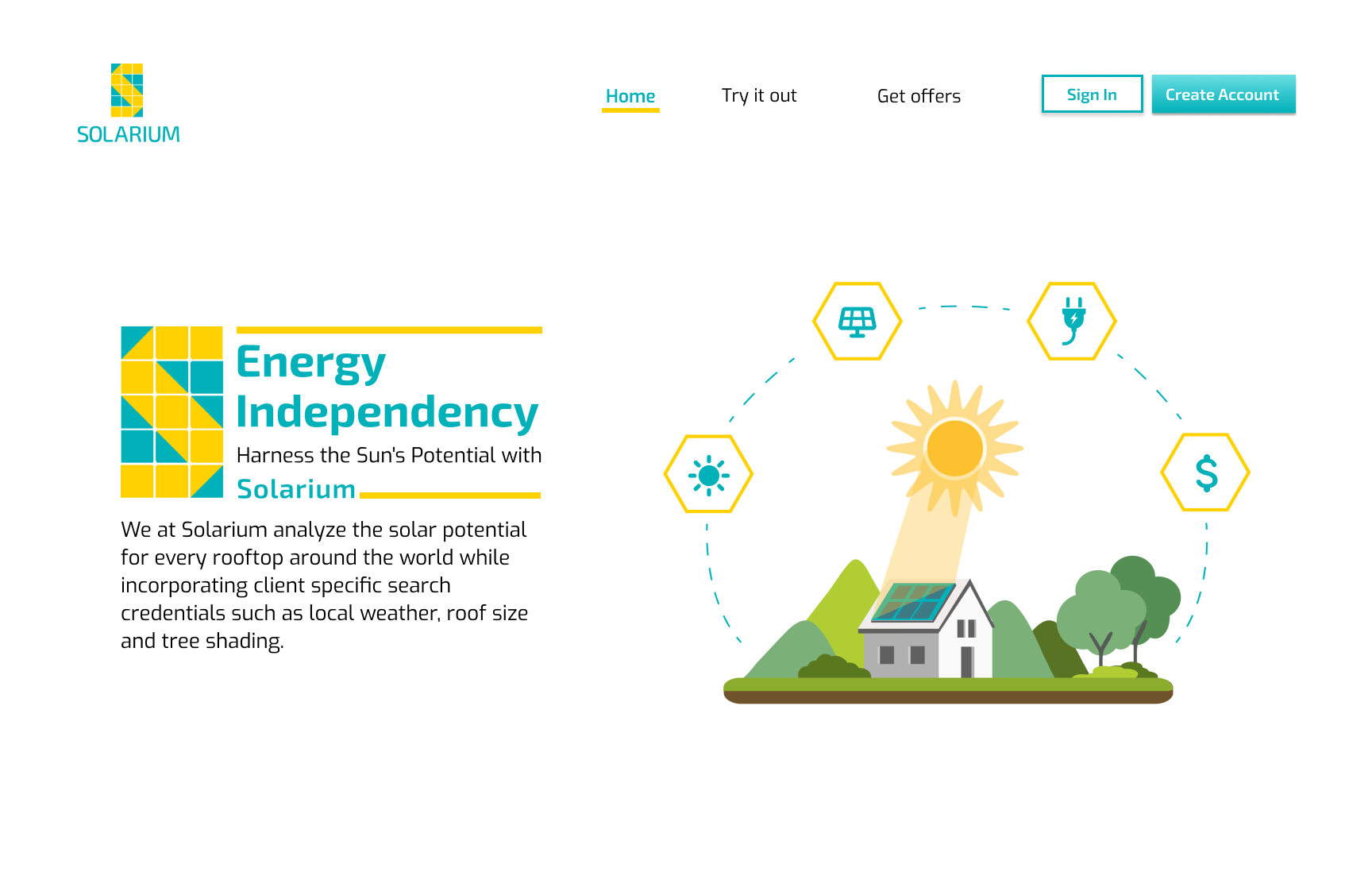
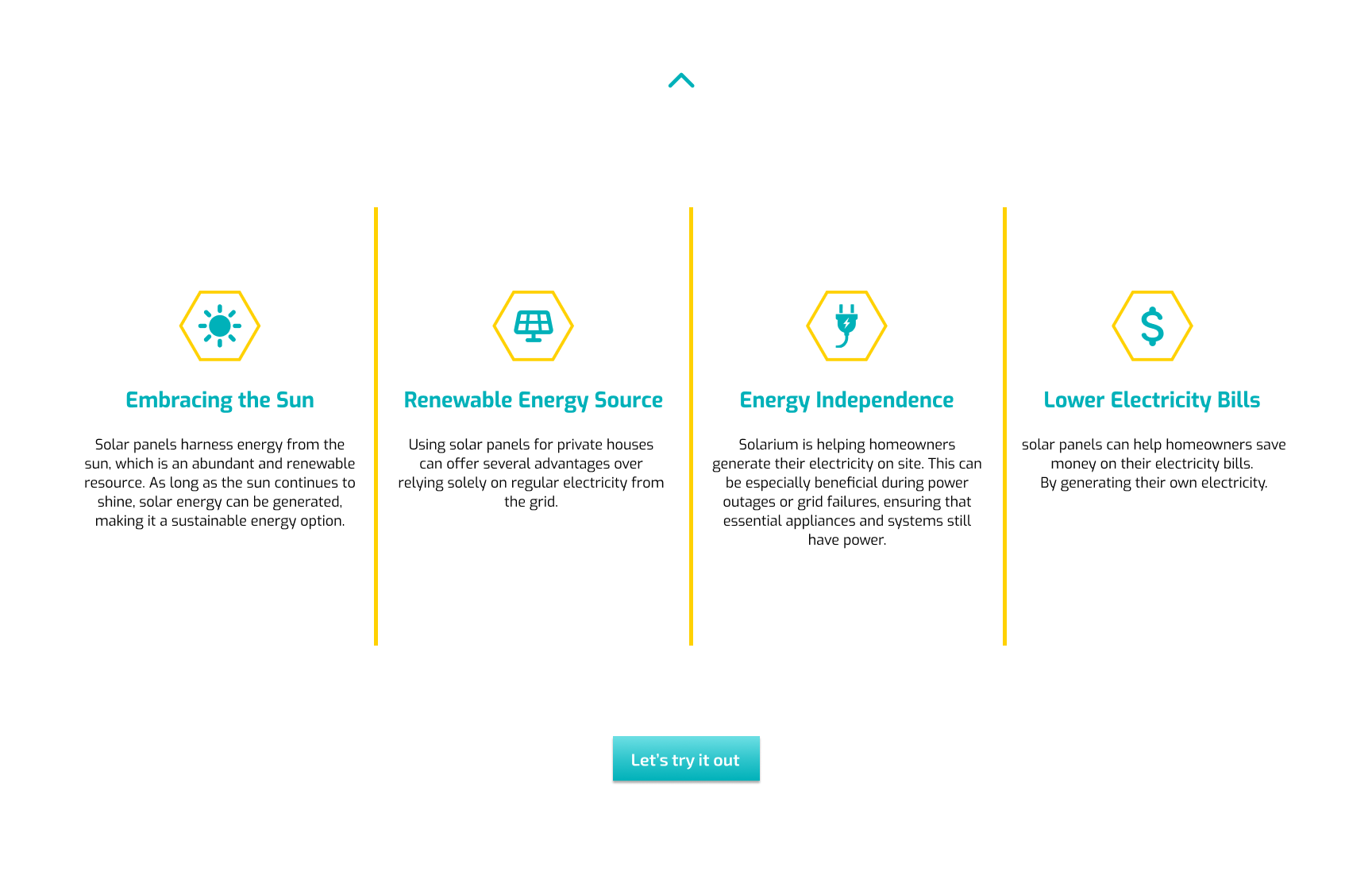
By analyzing user behavior and expectations, I created detailed personas representing different types of users such as homeowners tracking their energy savings and businesses optimizing solar performance. I mapped out their typical workflows, pinpointing key interactions and pain points. This research informed the development of journey maps and user flowcharts, ensuring that Solarium’s design was user-friendly, data-driven, and accessible to all experience levels.
To design an intuitive and efficient user experience for the Solarium platform, I began by creating a detailed user flow chart. This chart served as a visual representation of the user’s journey through the app, ensuring that every interaction was thoughtfully planned and aligned with the user’s goals.
• Using Figma I began sketching out the flowchart, starting with the landing page and moving through each key stage of the user journey.
• For each stage, I mapped out the possible actions a user could take and the corresponding screens or information they would encounter.
This included decision points, where users could choose different paths ensuring the flow was logical.

The inspiration for the logo was the way solar panels looks like.
I created the letter “S” to show on it like the letter is getting the warmth of the sun's energy shining on it.
The yellow color represents Energy and Optimism. Yellow is often associated with energy, brightness and optimism. It complements the solar theme, symbolizing the sun's radiant energy and the positive impact of solar power. Yellow is highly visible and draws attention to all the elements in the website.
The bright blue color in Solarium symbolizes clear blue skies and clean energy, reinforcing the connection to solar power and sustainability.
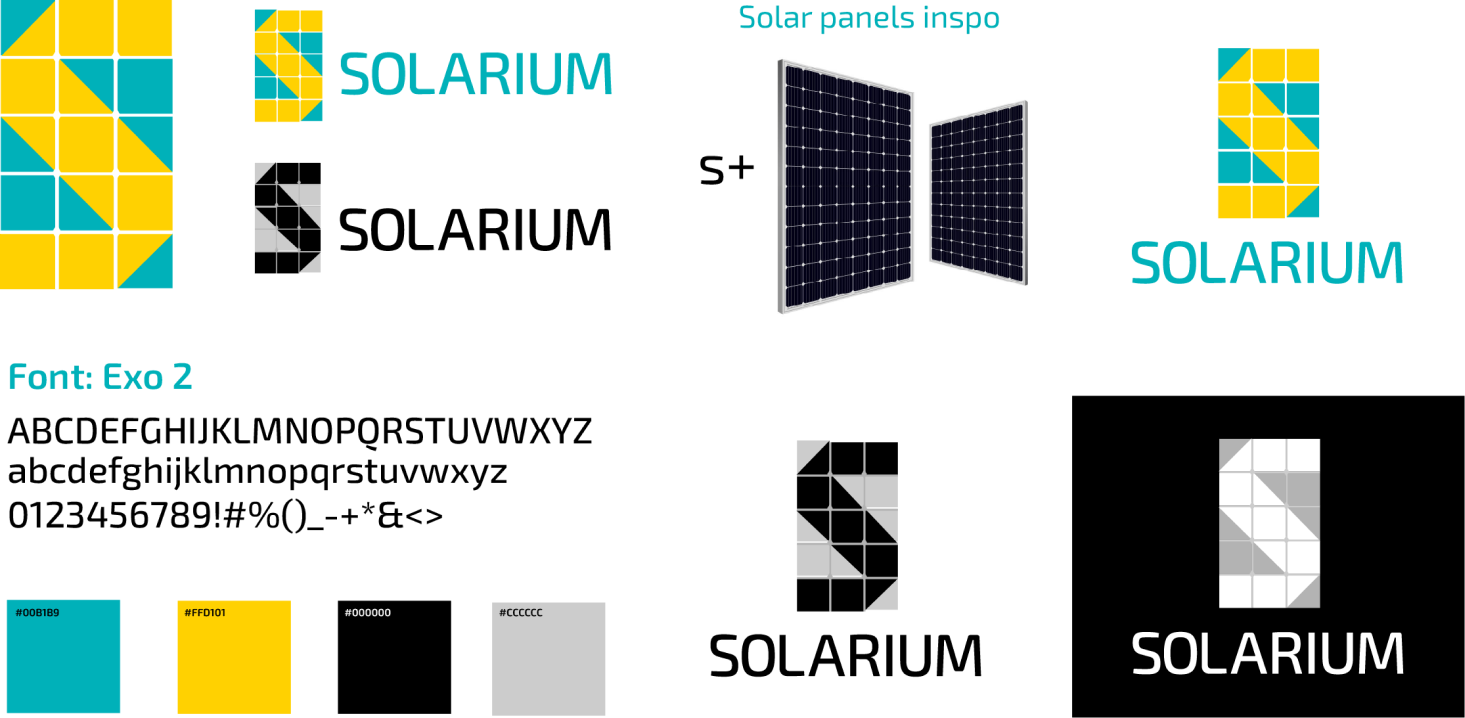
The elements I chose for the app are- solar panels, sun and electricity icons. My decision to use Sharp edges shapes in the design is influenced by various factors. The main factor is the fact that solar panels have sharp edges and a square shape which aligns with the brand's visual identity and creates a consistent and recognizable look, enhancing brand recognition. Also, for a modern and Clean aesthetic: it creates a sense of precision and simplicity, which can enhance the overall visual appeal of the website.
I illustrated the illustrations and the icons at the homepage in Adobe Illustrator for it to look like nature and technology are combined in harmony.
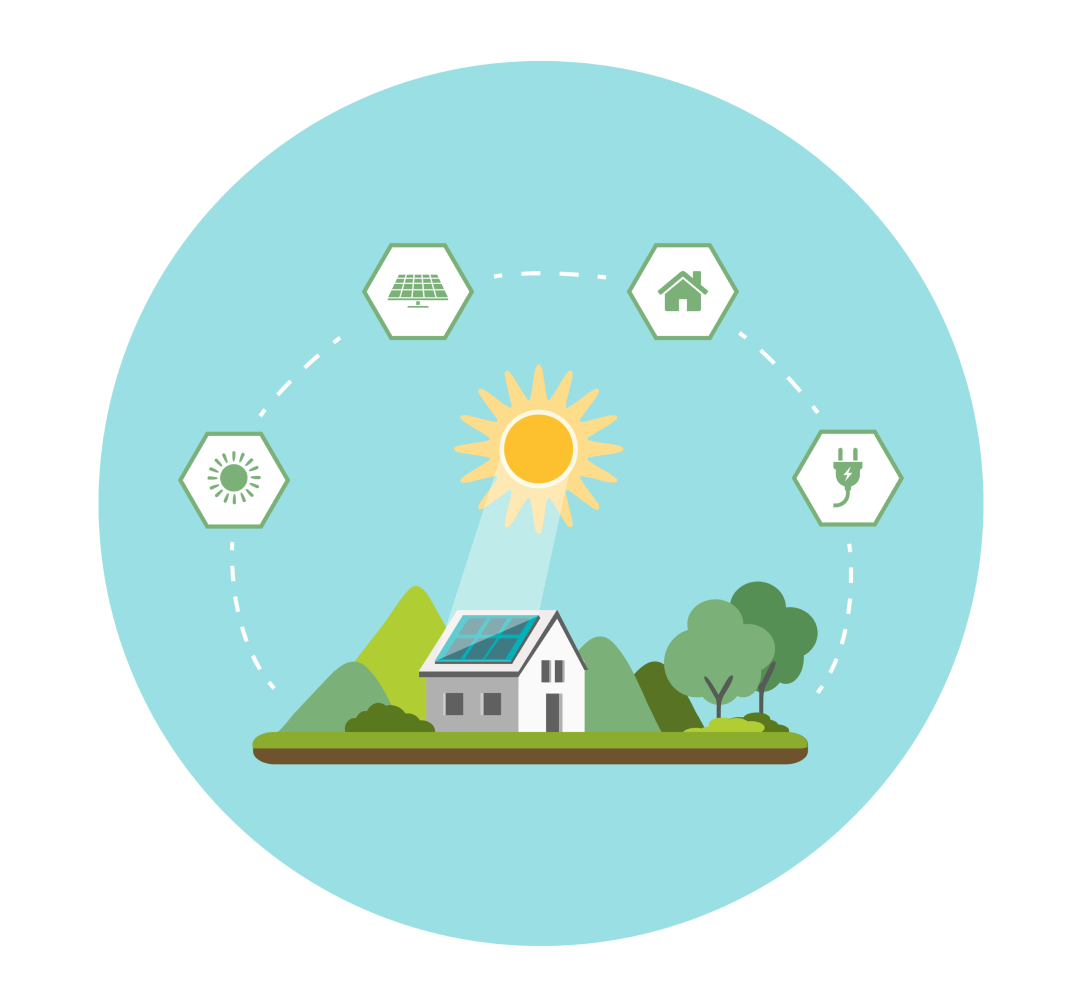
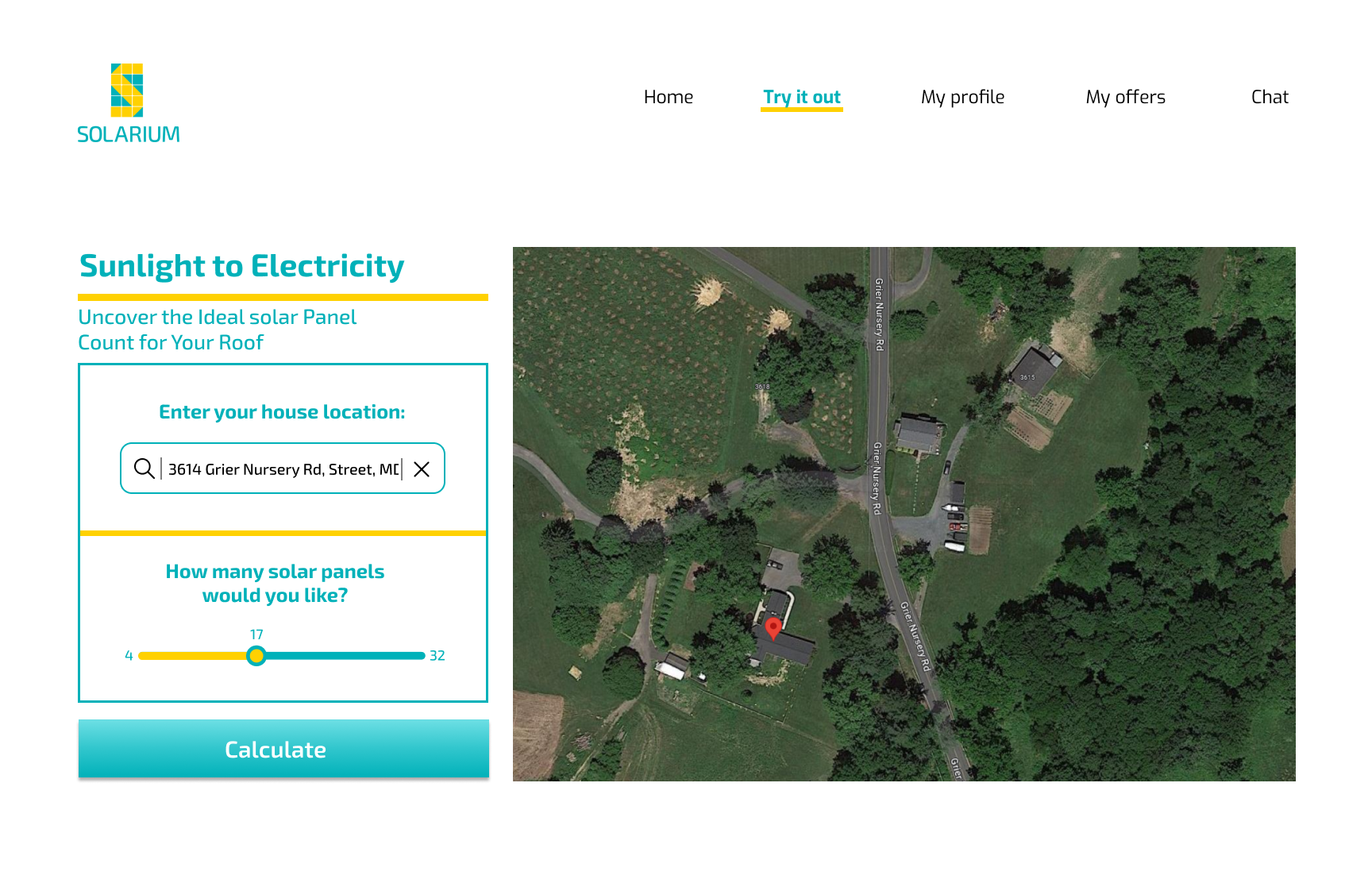
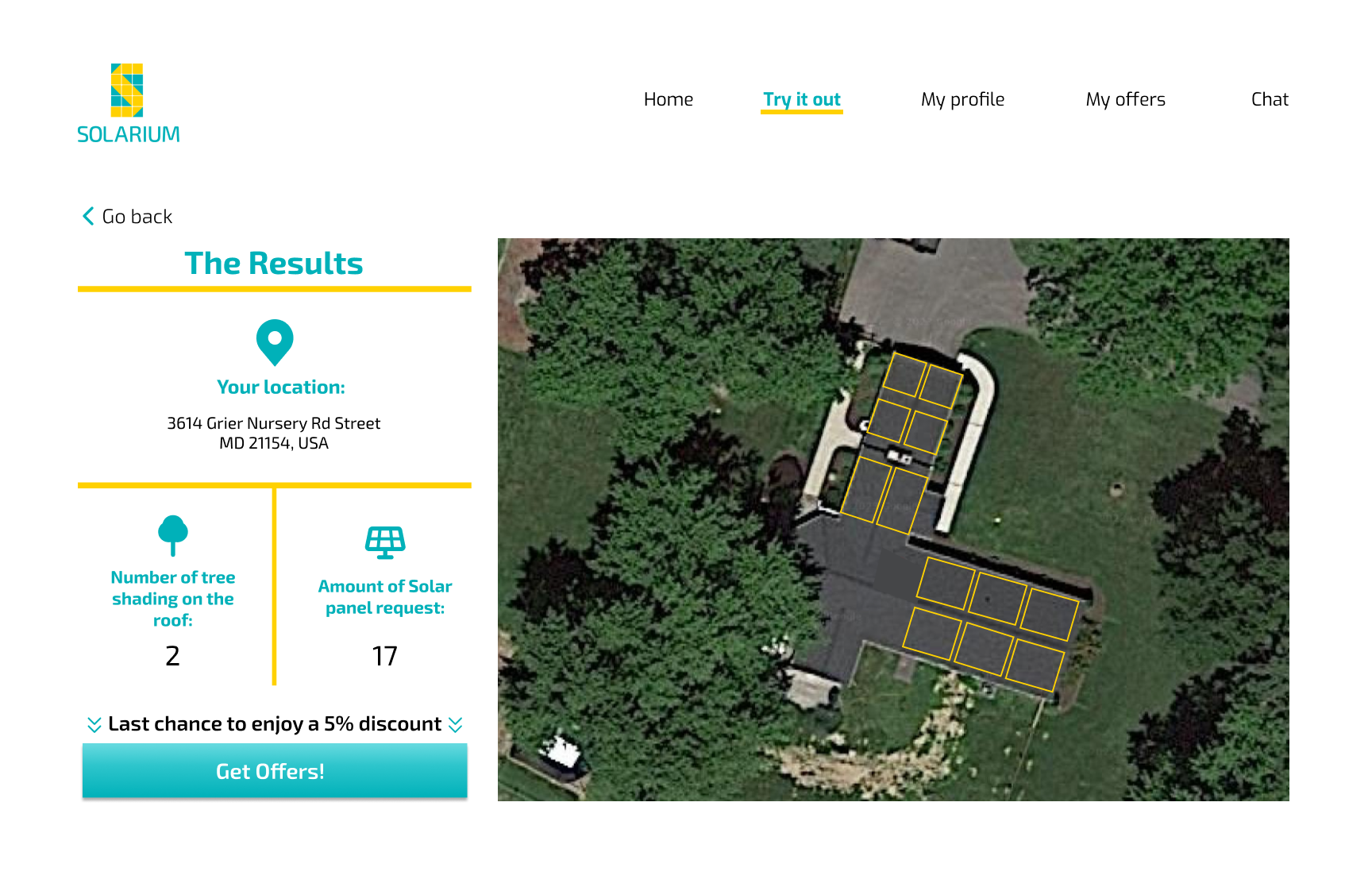
• Referral Program: We award users with gifts when they refer friends to join the app, it is important to note that the reward is for both the referrer and the new user. By offering rewards, Solarium provides a clear incentive for the users to refer their friends. People are more likely to take action when there is a tangible benefit involved, such as receiving gifts, bonuses, or discounts. The fact that both the referrer and the new user will receive rewards makes it a win-win situation for both parties.
• Special offers: “last chance to enjoy a 5% discount!- call-to-action that aims to encourage the user to take action promptly and make a decision about getting solar panels. The phrase "last chance" triggers the fear of missing out on a valuable offer. It leverages urgency and the potential for cost savings to motivate the user to move forward with their decision.
• Progress Visualizations: There is a graph that indicates how much the user will save when deciding to get solar panels. This provides a clear and visual representation of potential savings and also a sense of accomplishment and motivation. Users can quickly grasp the financial benefits of installing solar panels and understand the impact on their energy expenses over time. A data-driven approach appeals to users who prefer evidence-based decisions. It presents concrete numbers and data, which can build trust and confidence in the potential savings.
• Unlockable Content: I hid the feature of seeing how many solar panels may be installed on the roof so that the user will unlock it by signing in to the app. By that there is an incentive for the user to sign up or log in to the app, it creates a sense of curiosity and intrigue and it is more likely for the user to take this action to unlock the hidden feature and access additional benefits. Users may be motivated to explore the app further to discover valuable content or tools available after signing in.
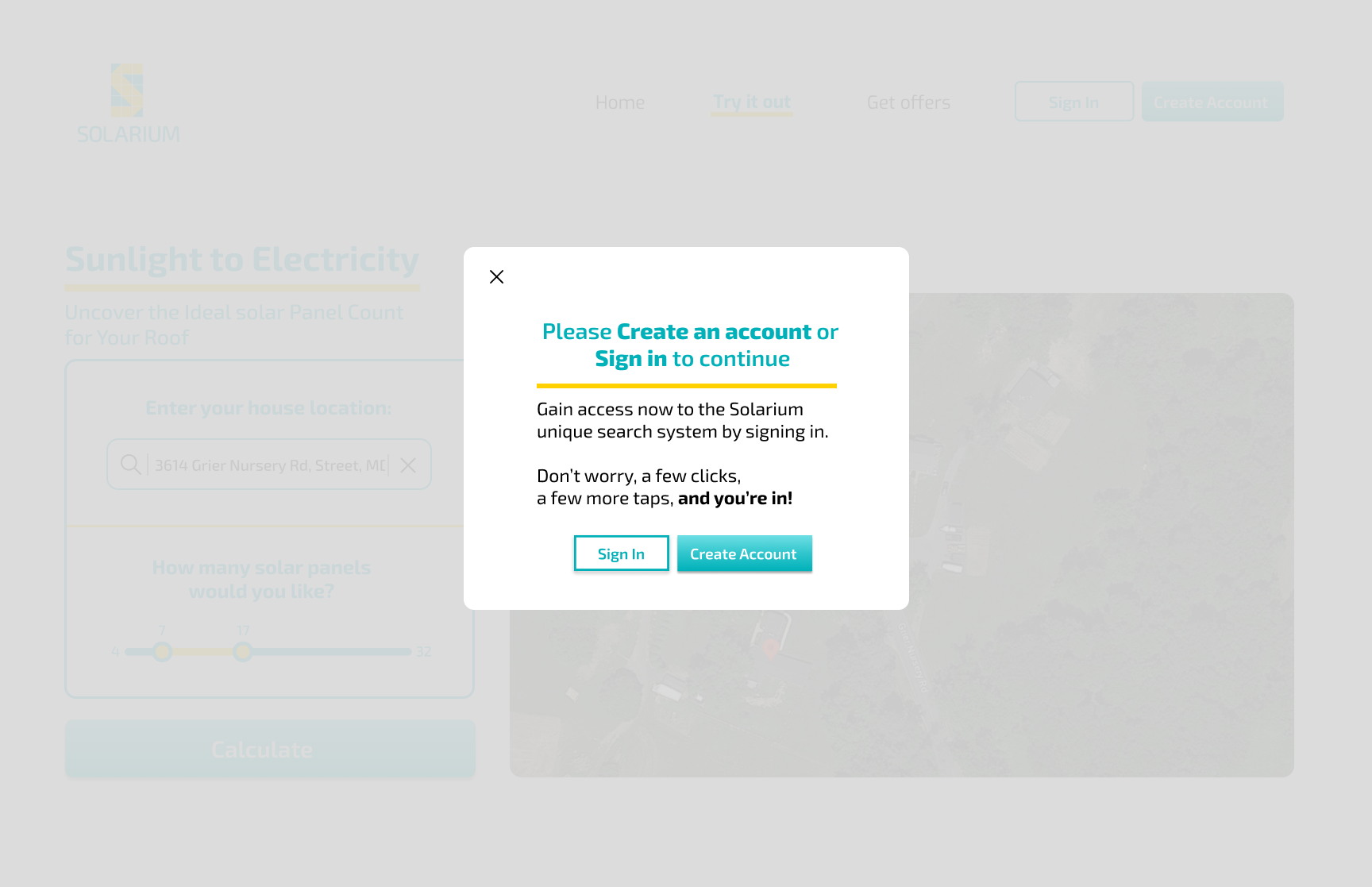
• Tips for saving energy: I provide the users with energy saving tips and fun facts about renewable energy, so that users can learn and implement ways to save energy and create sustainable practices.
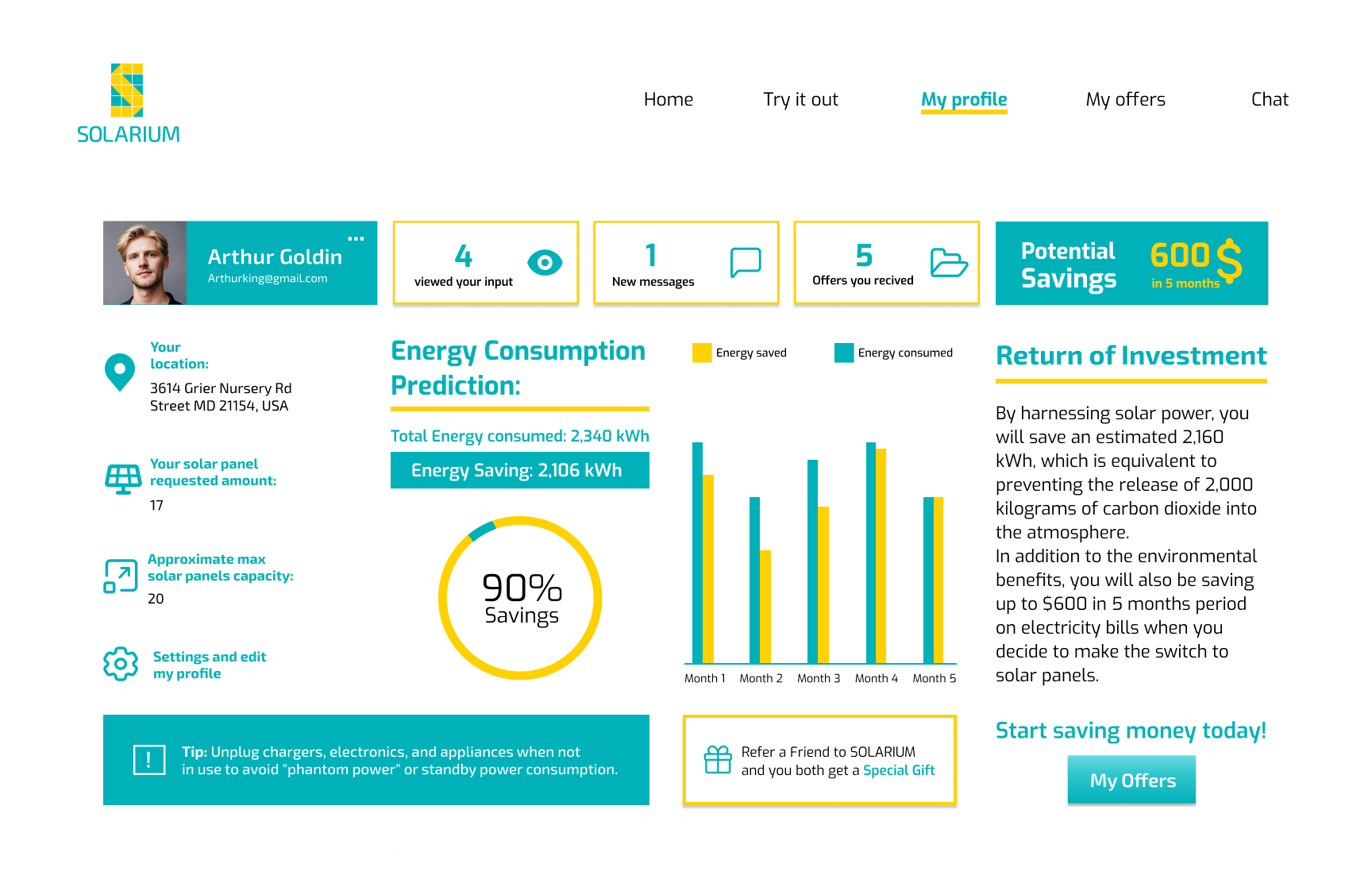
One of the main challenges in designing Solarium was balancing the complexity of solar energy data with a clean and user-friendly interface. Solar panel systems generate detailed performance metrics, and ensuring real-time monitoring without overwhelming users required thoughtful data visualization. I refined the dashboard to highlight key insights using intuitive graphs and clear visual cues. Another challenge was addressing the varying levels of user knowledge, some were experienced in solar management, while others were new to the technology. To bridge this gap, I integrated subtle tooltips and guided onboarding to make the experience approachable for all users.